Mahabaleshwar Sightseeing
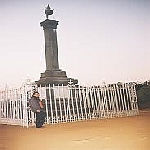
Lodwick Point
Originally known by the name "Sydney Point", this vantage spot located about 5 kilometers from the heart of Mahabaleshwar is christened after Colonel General Lodwick who was the first European to climb this hill. He, along with his military troop and some Indian guides trekked to the top of this part of Sahyadri ranges in the year 1824 and made this majestic apex known to the world. His son erected a 25 feet high pole at the top of this summit to mark the achievement of his father and thereafter the place came to be known as Lodwick Point. The memorial pole also bears a sculptured head of General Lodwick made of marble.
Lodwick Point, the isolated precipice nestled amidst two deep valleys, is regarded to be the most beautiful viewing point of Mahabaleshwar. The glamorous charisma of encompassing mountain crests carpeted with blooming flowers and verdant greenery is brought out to its fullest from Lodwick Point. From here, one can also enjoy the spectacular vista of the Lodwick Fall and the divine panorama of Elphinstone Point stationed at Pratap Gad. The road that leads us to the Lodwick Point meanders through dense forests of Western Ghat and is well maintained and quite suitable for almost all kinds of vehicles.
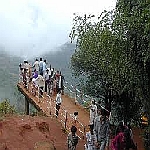
Arthur's Seat
Situated about 12 km from Mahabaleshwar, Arthur's Seat is a must visit destination of this tourists' heaven. Named after a popular English actor "Arthur Malet", Arthur's Seat is the only venue that offers an impressive perception of the geographical distinction between Konkan and Deccan territories. Arthur Malet was the first person to build a house at this pinnacle of Sahyadri hills. Arthur's Seat, endowed with the title "Queen of all points", is rested at the altitude of about 1470 meters above sea level and nearly 600 meter above the coastal strip of Konkan. The left side of Arthur's Seat is skirted by the deep and barren Savitri valley and the right side is bounded by verdant green woods enveloping the cursory valley lying beside. While you walk down the path leading to Arthur's Seat, you will also come across the starting point of Savitri River known as Tiger's spring. At times the arrangement of rocks on the southern side of Arthur's Seat is compared to the famous Grand Canyon of Colarado in USA.
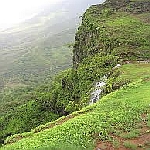
Wilson Point
Wilson Point, frequently known by the name "Sunrise Point", is the nearest and one of the most popular of the 30 viewing points of Mahabaleshwar. Stationed at the altitude of 4,710 feet above sea level, this is the highest lookout point here. Bequeathed by the nature with a vast plateau at such a height, Wilson Point has three observation towers, each perched at varied locations. Every watching tower has a masonry round platform from where beholders can enjoy the astounding sights of both sunset and sun rise. The sky pigmented with different shades of yellow, orange, red and blue appears purely magnanimous at these hours. From the top of the Wilson Point, tourists can also apprehend the bird's eye view of Old Mahabaleshwar, Babington Point, encompassing valleys and many other places near and far.
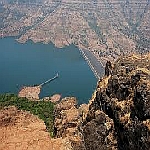
Kate's Point
Christened after the name of Sir John Malcolm's daughter Kate, "Kate's Point" is nestled at the elevation of about 1,290 meters along the Duchess Road in Mahabaleshwar. Situated about 6.8 km from the central market, this lookout station is noteworthy for the commanding and splendid spectacles that it offers. From the top of this huge rocky plateau observers enjoy flabbergasting contours of surrounding countryside, especially, the marvelous Krishna River, magnificent Krishna Valley and majestic Dhoom Dam.
Moreover, the awe inspiring vista of the peaks such as Pandavgadh, Kamalgadh and Mandardeo can also be perceived from Kate's Point. Descending from the Kate's Point, you will come across Jor Valley, Balkawadi, Dhoom Valley and the intersection points of Krishna and Vedganga Rivers. The best time to visit Kate's Point is winter when the skies are clarion, weather is balmy and one can get bright and clear views of encircling terrain from here. Eco Point, positioned alongside the Kate's Point is also famous amongst the tourists who love to call out the names of their loved ones and hear them repeated by the glen down.
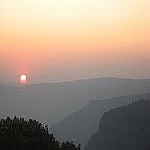
Bombay Point (Sunset Point)
Bombay Point, popularly known as Sunset Point is one of the earliest known vantage points of Mahabaleshwar. This headland, regularly visited by oodles of tourists receives its name after its geographical locale. Stationed on the older route leading to Mumbai (then Bombay), this is an ideal venue for late afternoon and evening picnics. Tourists head towards the Bombay Point every evening to witness the ballet of colors in the arena of auroral sky at the hour of sunset. The shades of red, orange, yellow and grey gracefully painted on this azure canvas creates a breathtaking panorama on the back of horizon.
The transition time of sun bidding goodnight and the duskiness taking over the reigns is really a banquet for the eyes. The Bombay point is a large promontory with a pavilion installed where visitors can sit and appreciate the beauty of nature. From the top of Bombay Point or Sunset Point you will also get the wondrous views of the towering Sahyadri Ranges, imposing Pratapgarh and Makrandgarh and striking Koyna Valley. To the left of Sunset Point is situated the Lovers Point which is all the time thronged by couples enjoying togetherness against the backdrop of appealing natural beauty.
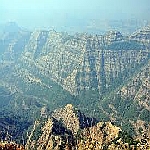
Elphinstone Point
Entitled in the honor of Sir Elphinstone; the Governor of Bombay, this vantage point was discovered by Dr. Murray in the year 1830. A 3 kilometers drive from Arthur's Seat and an 11 kilometers journey from Frere Hall will reach you to the lofty Elphinstone Point featured with thrilling cliffs and beckoning peaks. Blessed by the callowness of refreshing nature, this scenic locus offers enthralling spectacle of surrounding topography. On the tableland at the Elphinstone Point one can see an old Bungalow built during the British Raj. This cabana has been providing accommodation for the tourists all these years.
Mahabaleshwar municipality is speculating to demolish this building which is in the blemished state now. They are planning to construct a new picnic shade at the Elphinstone Point that will cater the tourism needs. From the vertex of this viewing point we can get the clear vista of the glorious Pratapgarh and fascinating pulchritude of Koyna Valley on its left. Another verge of Elphinstone Point is skirted by a ravine which is embellished with peerless natural allure. This is the very place from where the Savitri River originates. This abyss is bounded by a hill on its opposite side which is crowned by the famous Arthur's Seat.
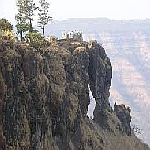
Elephant's head Point
The utmost end of the mountain range farther the well known Lodwick Point is called Elephant's Head Point. If we look at this site from Lodwick Point, the overhanging cliff structure creates a semblance of an elephant's head with its trunk. Located at the elevation of just12 feet above the Koyna Valley, this field can be reached either on a pony back or on foot. Elephant's Head Point is a favorite destination in Mahabaleshwar for the overwhelming views of the surrounding milieus as well as the Sahyadri Mountain Ranges that it offers.
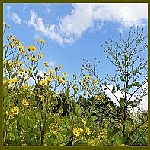
Connaught Peak
Located off the Old Mahabaleshwar Road, Connaught Peak is approximately 7 kilometers away from the heart of the city. Perched at the altitude of about 1400 meters, this is the second highest summit of Sahyadri Mountain Ranges. From the apex of Connaught Peak, tourists can behold the captivating prospects of encompassing valley carpeted with lush greenery. Moreover, picturesque outlooks of Old Mahabaleshwar, Krishna Valley, Elphinston Point, Pratapgad, Pandavgad, Kamalgadh, Ajinkyatara, Torana Killa, Vena Lake, Pasarani Ghat and Panchgani leave the perceiver absolutely stupefied.
Adding to this, this vertex also offers the charming parade of colors at the time of sunset and sun rise. Located at such a favorable position, Connaught Peak was originally known by the name Mount Olympia and was much sought after by the riders and adventure seekers. The Duke of Connaught visited this paradise personified and was so entranced by its charisma that he couldn't keep himself off from the temptation of annexing his name with this place. So in the year 1880, Mount Olympia was renamed as Connaught Peak. This is one of the most popular destinations of Mahabaleshwar and the allure of the vicinity is such that no one would want to go back from here.
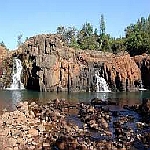
Lingamala Falls
Lingamala Falls, one of the prominent waterfalls of Mahabaleshwar are located about 6 kilometers from the main market on the way to Panchgani. The waters of river Venna, gushing down the steep cliff from the Elephant's Head into the Venna Valley at the drop of 600 feet, form this cataract. Profuse with glittering milky white water in monsoon, the Lingamala Waterfalls make an ultimately resplendent sight to behold. One single unbroken runnel of silvery water cascading down with full gusto enraptures the visitors.
The sprays of the water projecting the seven colors of rainbow add to the glamour of this pageant. Though at its best in rainy season, Lingamala Falls are also frequently visited during other months when the cascade appears to be a thin streak bathed in silvery nectar. This picturesque and placid setting is a favorite picnic spot near Mahabaleshwar. One can either take a taxi or board a bus to reach this locus, or even walk down the road and enjoying trekking.
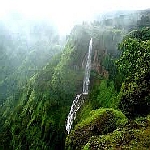
Chinaman's waterfall
You cannot call it a trip unless you visit the Chinaman's waterfall of Mahabaleshwar. Positioned close to the Falkland as well as the Sasoon point, Chinaman's Waterfall is about 2.5 kilometers away from the town. Traveling down the Carviali Road from the heart of Mahabaleshwar will lead you to this perfect holiday destiny featured with exotic water cataract deluging down into the Koyna Valley. The comely and peaceful surroundings will relieve you off all your tension and deliver you extremely refreshed and rejuvenated. This waterfall is named Chinaman's Waterfall owing to its background associated with Chinese inhabitation here. During the era of colonization, the Chinese Prisoners were kept here who used to cultivate and maintain the garden located adjacent this waterfall.
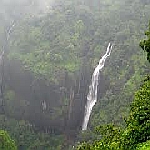
Dhobi Waterfall
The bridle path that connects Petit Road to the Old Mahabaleshwar Road leads you to the celebrated picnic spot of Mahabaleshwar; Dhobi Waterfall. Stationed about 3 kilometers from the center place of this town Dhobi Waterfall lays on the path that connects Lodwick point to Elphinstone Point. This waterfall derives its name from the fact that this thrust sufficed as a chief washing place for the launderers of Mahabaleshwar in olden days.
At Dhobi Waterfall that faces the Elphinstone Point; water drops down the rocky plateau into the beautiful Mahabaleshwar Valley and ultimately merges with the waters of Koyna River. Abundant with pristine natural beauty and balmy ambiance, Dhobi Waterfall comprises a leading tourist destination and a favorite picnic venue of Mahabaleshwar.
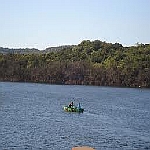
Venna Lake
Placed on Mahabaleshwar-Panchgani Road, this popular hang out of Mahabaleshwar is endowed with lush greenery embroidering its fringes and sparkling water amplifying the charm of the vicinity. Constructed by Maharaja Shri Appasaheb, the erstwhile King of Satara in the year 1842, this colossal lake is spread over the total area of over 5 acres. Venna Lake, located just 2 kilometers from the city bus stand, is thronged by the numerous visitors every evening.
A number of amusement activities like boating, fishing, horse riding and the eating outlets stationed on the purlieu bid myriads of tourists everyday. The strawberry stalls set up here are always horded by the people enjoying the luscious fruits, the specialty of the town. Children are particularly attracted towards the mini train in operation near the lake. The placid environ around the lake embedded with nature's bounty makes this an ideal locus both for relaxing as well as for merry making. The area near the lake is bustling till late night.
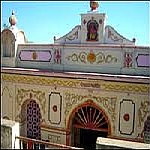
Mahabaleshwar Temple
Mahabaleshwar, the renowned hill resort derives its name from the patron deity of the town "Mahabali". The word Mahabali means "the one with great power" and this title is bestowed upon the mighty God of destruction Lord Shiva. The Hindu temple of Mahabaleshwar dedicated to Lord Shiva is regarded to be an important pilgrim destination of the country. This temple is situated in the Old Kshetra Mahabaleshwar about 6 kilometers away from the heart of the main Mahabaleshwar city. Set up by Maharaja Chanda Rao of More Dynasty in 16th century, this historical temple reveals the utter Hemadant style of architecture originated from South India.
Fortified by a 5 feet high stone wall, the interiors of this shrine are divided into two parts the sanctum and the main hall. The sanctorum of this temple houses a 500 years old Shiva Lingam which is believed to be Swayambhu, meaning self originated. This black stone Lingam can be seen in the shape of Rudraksha and it is revered by the name "Mahalingam". The deity of the Mahabaleshwar Temple is believed to be superior to the celebrated twelve Jyotirlingas of India. The holy articles of Lord Shiva mainly Trishul, Damru, Rudraksha and his bed are placed in this temple which are believed to be as old as 300 years. Apart from that, the temple premises also harbor a square platform which has a legend associated with it. As the story goes, Chhatrapati Shivaji Maharaj, the Maratha laureate weighted his mother Jijamata at this platform and gave away the gold of her weight in donation.
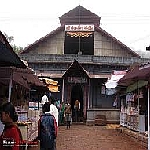
Panchaganga Mandir
Located next to the Mahabaleshwar Temple, the Panchaganga Mandir is dedicated to five sacred rivers namely Krishna, Savitri, Gayatri, Koyna and Venna. "Pancha" means five and "Ganga" means the holy river. As per the myth associated with this temple, the Hindu Trinities; Brahma, Vishnu and Mahesh were cursed by Savitri and as a result they turned into rivers. Krishna, Koyna and Venna Rivers are the embodiments of Lord Vishnu, Brahma and Shiva respectively. The temple houses a beautiful sculpture of Gaumukh (the holy head of divine Cow). The five auspicious rivers listed above together flow out from this Gaumukh in confluence. An idol of Lord Krishna is also worshipped in the Panchaganga temple.
This renowned temple of Mahabaleshwar was set up in 13th century by Raja Singhandeo, the Yadava King of Devgiri. Raja Chanda Rao More, the King of Jaoli repaired this shrine in 16th century. It is said that Chhatrapati Shivaji Maharaj along with his mother Jija Mata had visited this temple and received spiritual guidance from an accomplished Brahmin dwelling here. Chhatrapati Shivaji Maharaj also renovated the temple thoroughly in late 16th century and Raja Sahu again undertook the restoration in 17th century. Parshuram Angal, a rich banker of Satara rebuilt this temple in 19th century. The Panchaganga Temple is a legendary place of worship in Mahabaleshwar and devotees make it a point to visit this temple and pay homage at the feet of Lord Krishna and the five holy rivers.
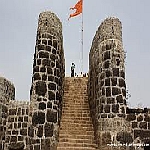
Pratapgarh Fort
Pratapgarh Fort; an imposing edifice from antiquity, placed about 24 kilometers from Mahabaleshwar was constructed by the great Maratha emperor Chhatrapati Shivaji Maharaj in the year 1656. The towering Pratapgarh was based overlooking the road that links the villages named Kinesvar and Par. The main objective behind constructing this fort was to protect the banks of the rivers namely Koyna and Nira and also the Par village from the Governor of Jaoli. Nestled nearly 900 meters above the see level, this massive structure comprises two archaic forts an upper fort and a lower fort. The upper fort is perched at the top of the hill while the lower fort is built in the south and the east directions of the ridge.
The upper fort houses a number of regal buildings including a temple dedicated to Lord Shiva, while the lower fort is noteworthy for its celebrated Bhavani Temple. The entire lower fort is barricaded by 10 to 12 meters high towers and numerous basins. The remarkable features of this fort are the maze of ponds, multiple chambers and a long dark path. Some of such misleading paths reach to the trap doors that open to the fall of 100 meters. Pratapgarh haughtily stands as the eye witness of the historical battle of 10th November, 1659 between the forces of Chhatrapati Shivaji Maharaj and Afzal Khan, when Afzal Khan was killed by Shivaji Maharaj. The fort still houses the tomb of Afzal Khan.

Roman Catholic Church
As Mahabaleshwar served as the summer capital of the former Bombay presidency, the town was inhabited by a large English population. This ancient Roman Catholic Church constructed in 18th century was used by them to conduct their holy masses and prayer services. Though in depleted condition today, this edifice still stands basking in the past glory of the ingenuity of British artists and artisans. The prominent feature of this church is the stain glass windows still unblemished that attract the tourists by their elegant looks.
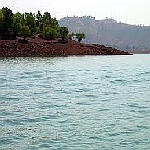
Tapola
Positioned approximately 28 kilometers from Mahabaleshwar, this beautiful locus is a paramount tourist destination and an ideal picnic spot. Nicknamed as "Mini Kashmir", Tapola is an exceptional weekend getaway embellished with incredible natural pulchritude. The amazing view of Koyna Dam backwater, the surmounting Sahyadri Mountain Ranges, meandering rivers, verdant forests, and lovely surroundings render this satellite village a heaven on the earth. The Koyna River that merges with Solshi River at Tapola creates a breathtaking vista. The dam built on Koyna River named "Shivsagar" is considered to be the biggest dam of the state of Maharashtra. Tapola is also a favorite place for adventure enthusiasts for offering a number of trekking routs through the lush green jungles. Many unknown and difficult to reach forts like Vasota and Jaygad add to the glory of this place.
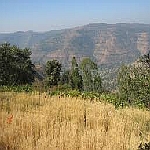
Panchgani
Panchgani, situated about 20 km from Mahabaleshwar is another well known hill station of Satara District that twins with Mahabaleshwar. Nestled in Sahyadri Mountain Ranges at the elevation of about 4300 feet above sea level and approximately 200 feet below Mahabaleshwar, this popular hill station of Maharashtra was discovered by John Chesson during the British Raj.
Noteworthy tourist's attractions of Panchgani include Parsi Point , Devil's Kitchen, Sydney Point, Table Land, Dhoom Dam, Mapro Farms, Marjorie Point, Morarji Castle, Rajpuri Caves, Kamalgad Fort, Bhilar Waterfalls, Serbaug, Lord Karthikeya temple, Wai Lake and all the destinations accessed from Mahabaleshwar.

Babington Point
Babington Point, situated just two kilometers form the township, is a much sought after tourist hotspot of Mahabaleshwar. Perched at the elevation of nearly 1294 meters above the sea level, this enchanting seat offers mesmerizing spectacle of the elegant Koyna Valley, opulent Chinaman's waterfall and gorgeous saddle back.

Mount Malcolm
Mount Malcolm, one of the oldest erected edifices of Mahabaleshwar is an extraordinary monument of colonial epoch. Amongst the most significant architectures of British era, this magnificent mansion was built in 1829 AD. Noteworthy for its architectonic ingenuity, this ziggurat is named after Sir John Malcolm in the remembrance of his visit to Mahabaleshwar.
This British General had paid a visit to Mahabaleshwar in the year 1828 and was immensely galvanized by the scenic beauty of this ethereal Eden. Though almost 200 years old, Mount Malcolm still retains its past glory and its architectural splendor. Mount Malcolm is regarded to be the benchmark for its peerless engineering and supreme craftsmanship. This fabulous edifice still stands as one of the most enticing attractions of Mahabaleshwar.


